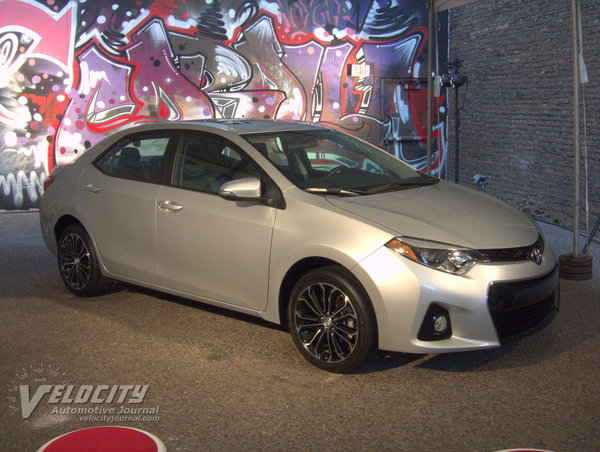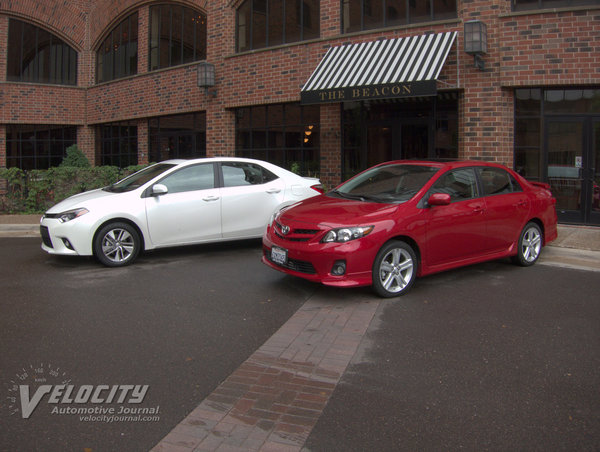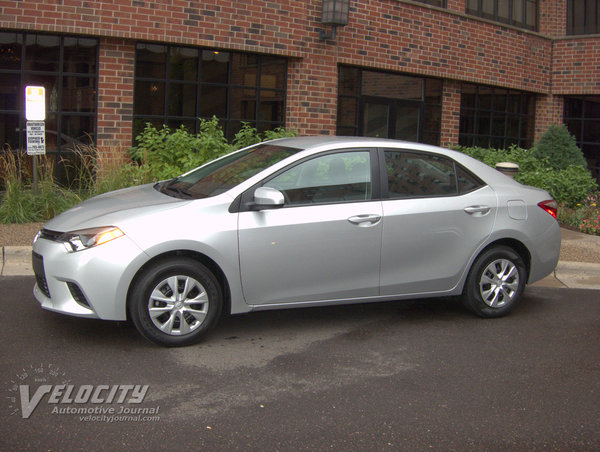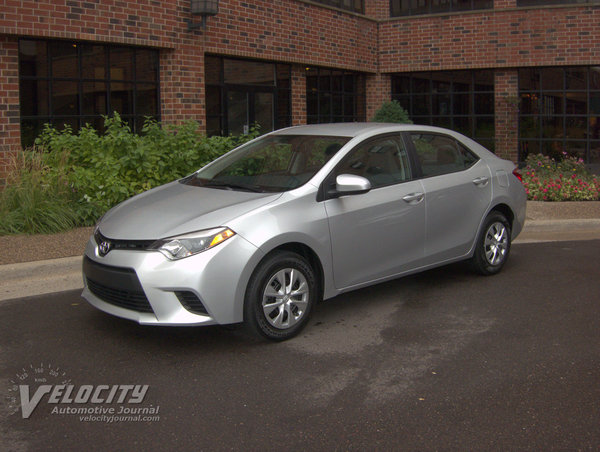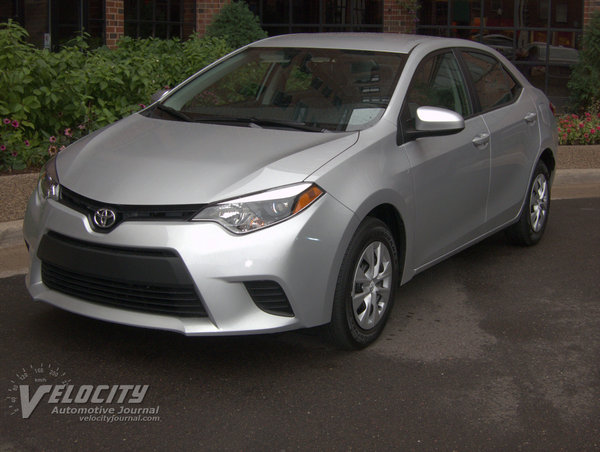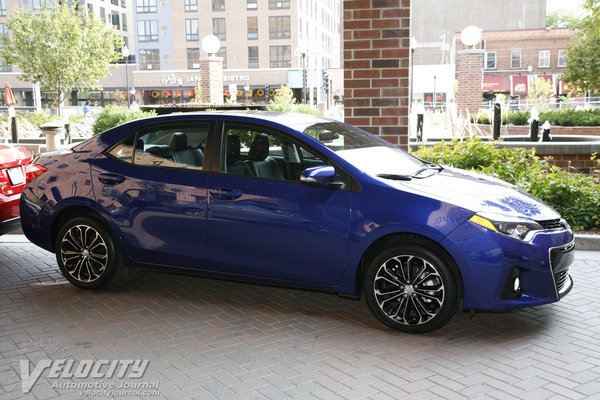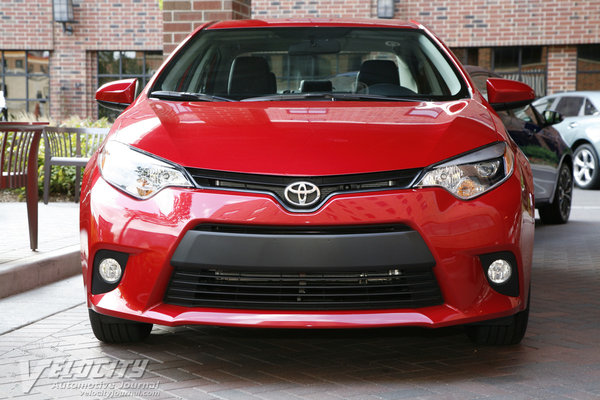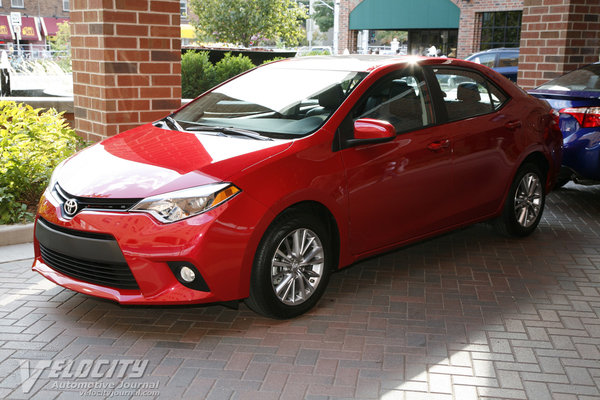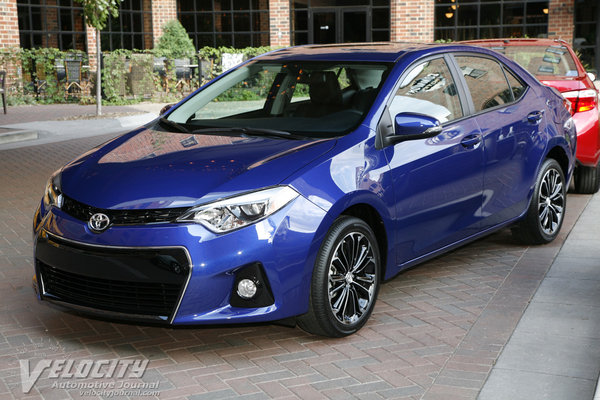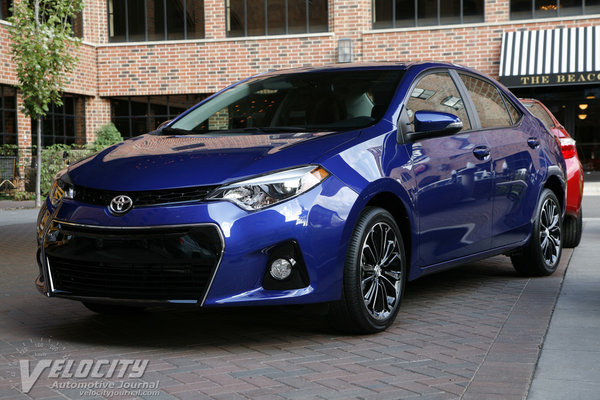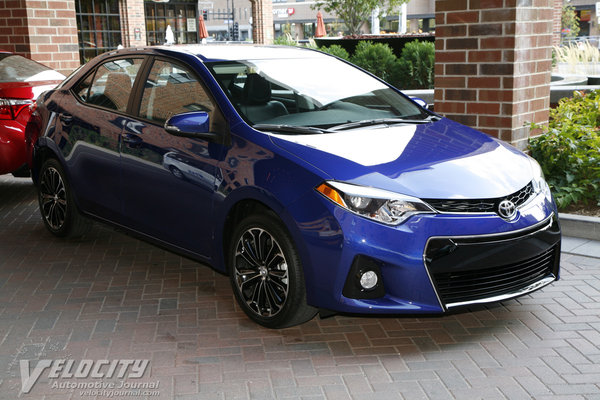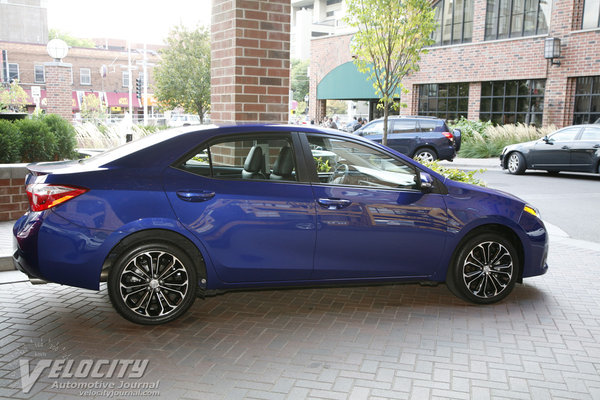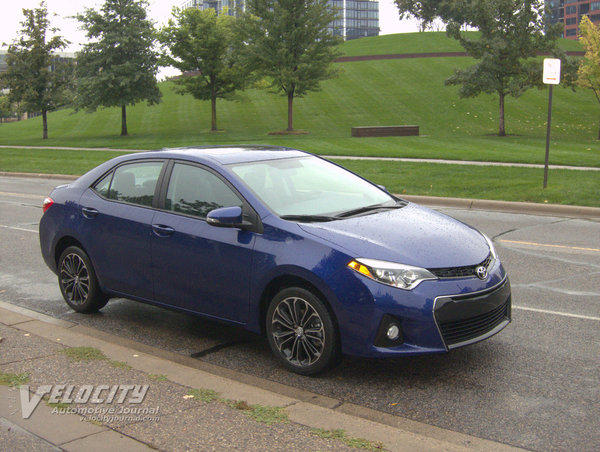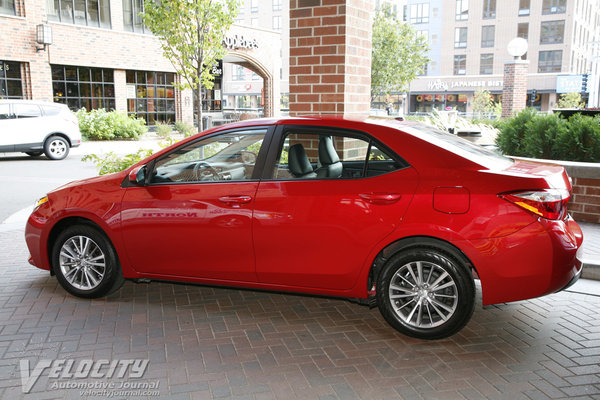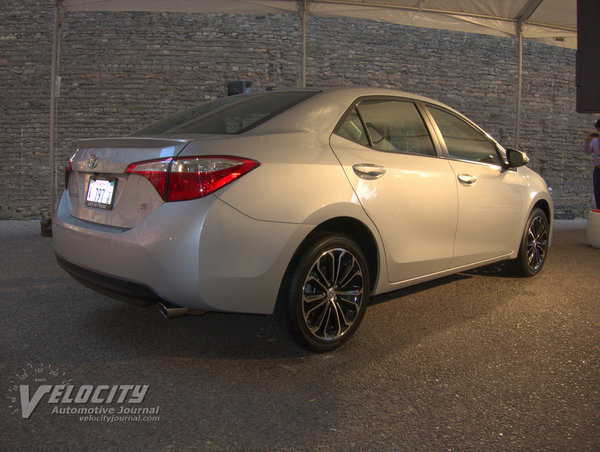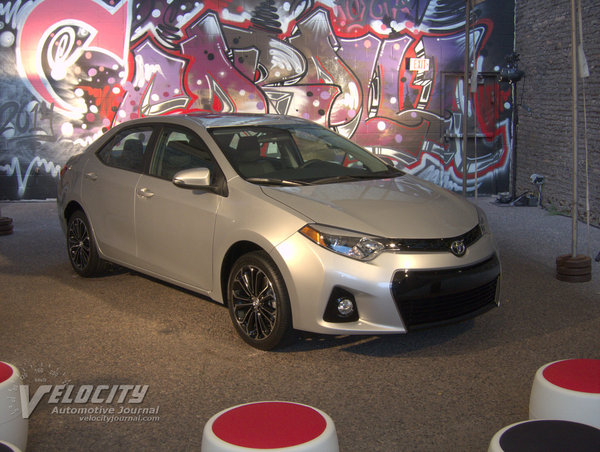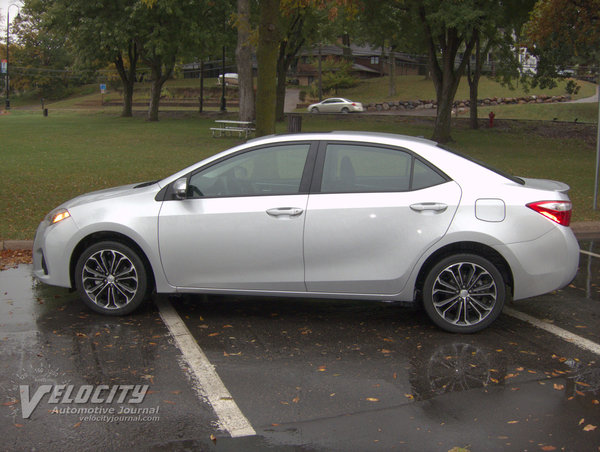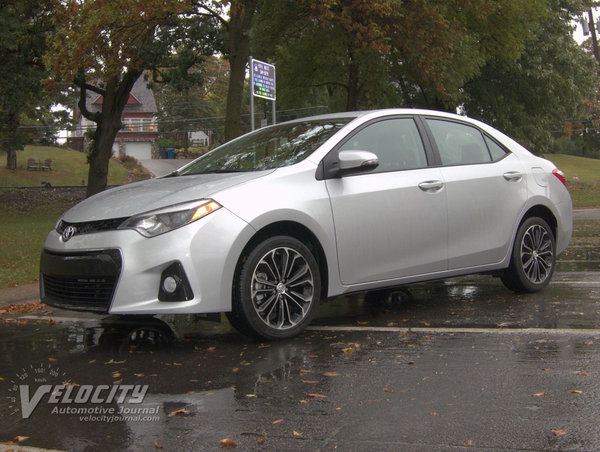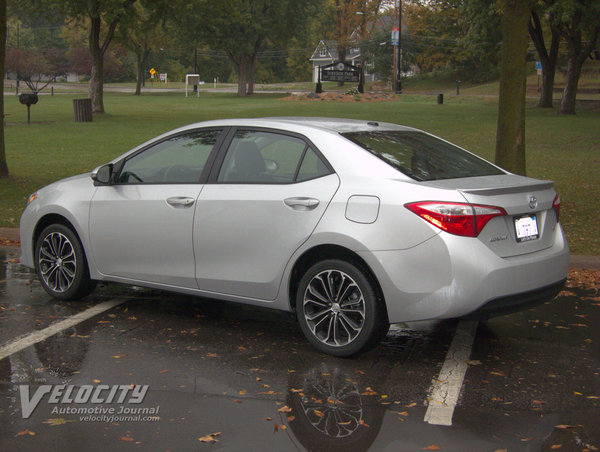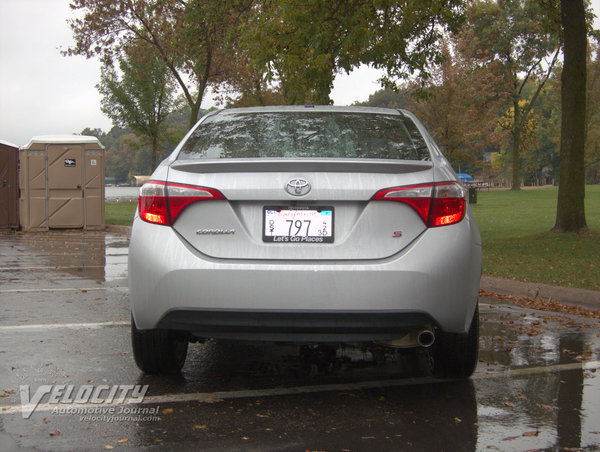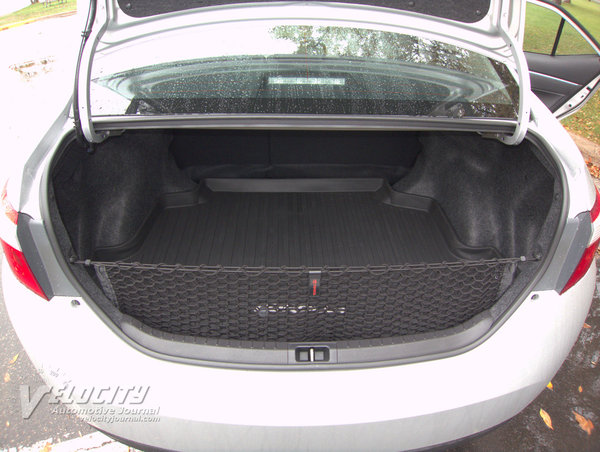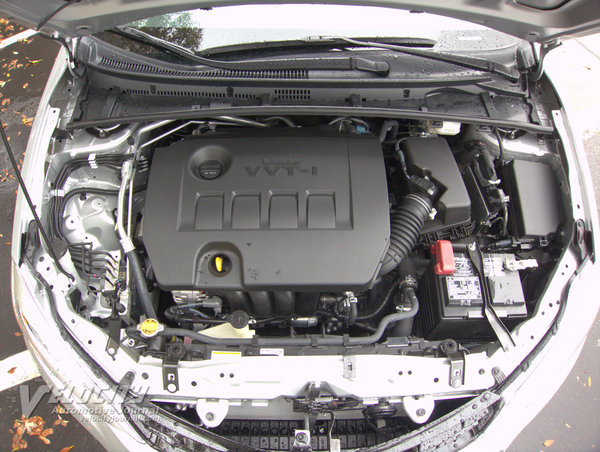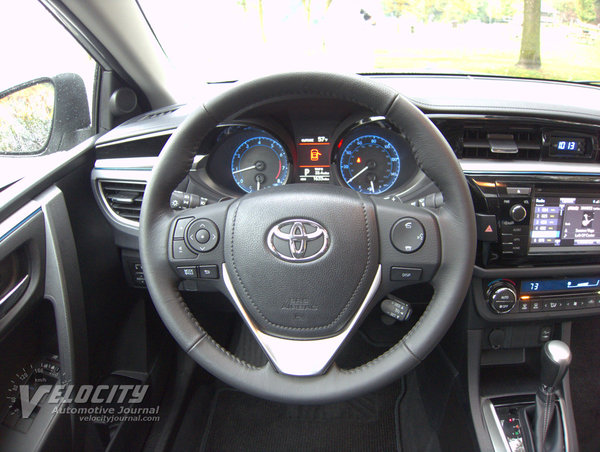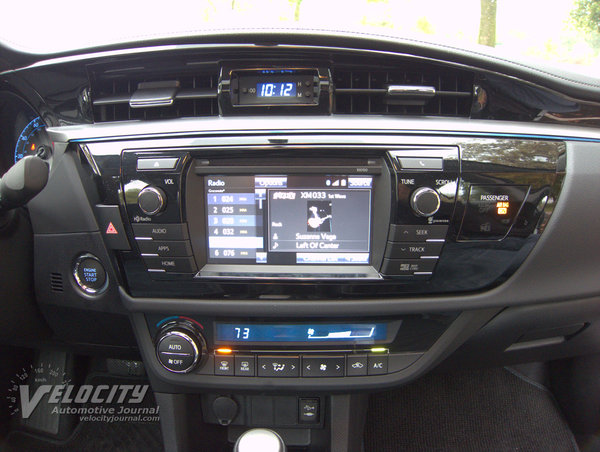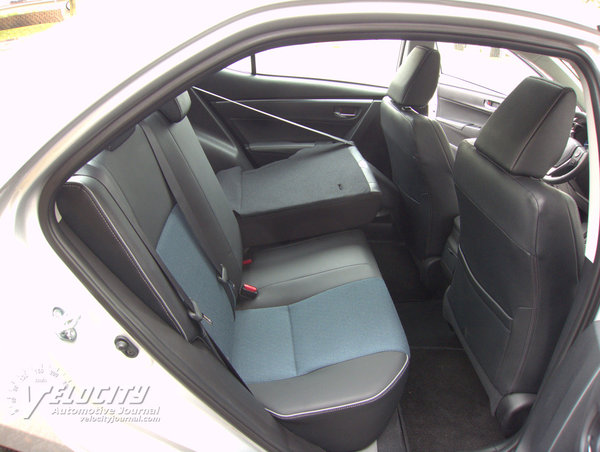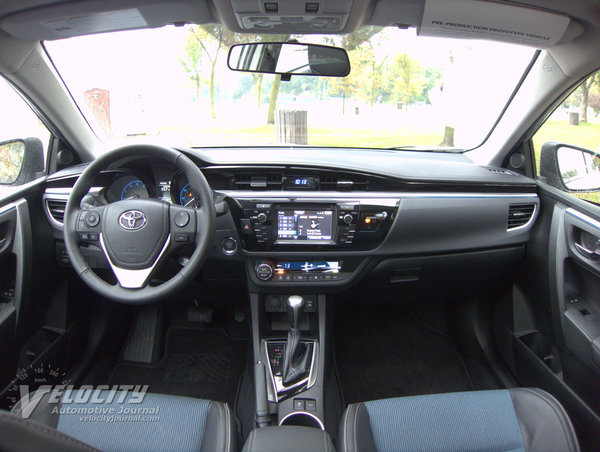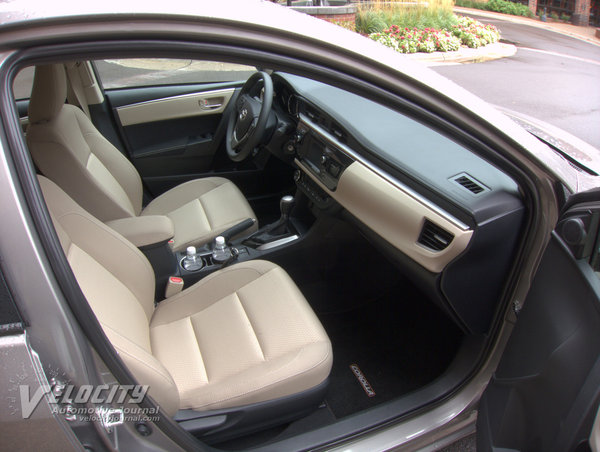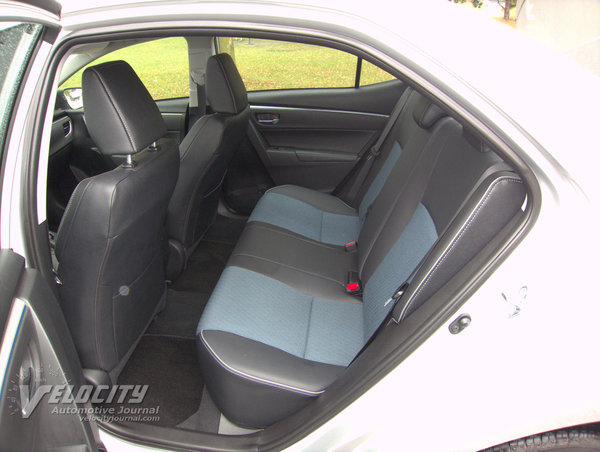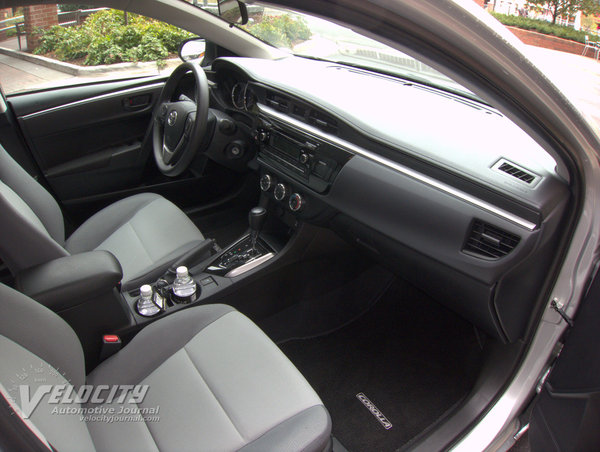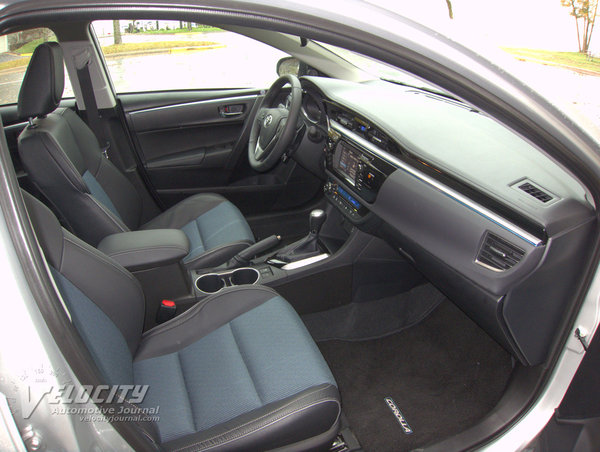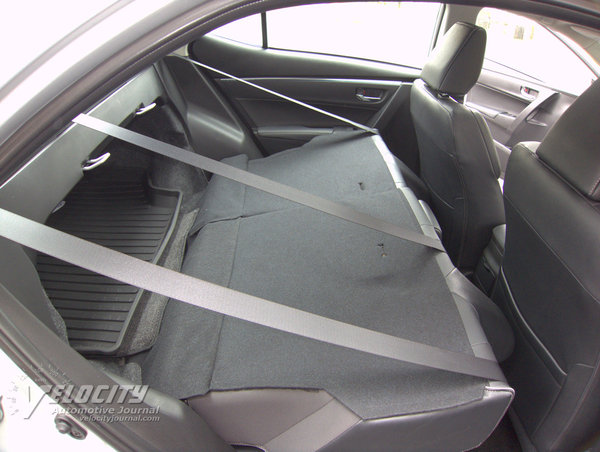2014 Toyota Corolla
11/03/2013
Shahed Hussain
The long-running Corolla has been Toyota's best-seller for decades, but rising competition from Ford and Honda threatens the Corolla's top-selling status. Toyota introduced the 2014 Corolla as a response to the Focus and Civic, along with the Sentra, Cruze, and Mazda3, all of them redesigned in the past few years. In this overcrowded field of competitors, the Corolla has continued to sell well despite being the oldest compact sedan in the segment.
Toyota now offers the Corolla in four trim levels: L, LE, S, and LE Eco. The base Corolla L is the price leader at $16,800, followed by the LE at $18,300 and the fuel-efficient LE Eco for $18,700. The sporty Corolla S starts at $19,000 and ranges up to $21,300 (S Plus) when equipped with the 6-speed manual, making it the most expensive model in the Corolla lineup.
Corolla models are powered by a pair of all-aluminum 1.8L inline-fours. The standard 2ZRFE engine uses Toyota's VVT-i variable valve timing to generate 132-bhp @ 6,000 RPM and 128 lb.-ft. @ 4,400 RPM. For the LE Eco, Toyota reserves the 2ZR-FAE Valvematic engine rated at 140-bhp @ 6,100 RPM and 126 lb.-ft @ 4,000 RPM. Valvematic technology varies both intake valve phasing and lift for greater efficiency and higher power. Due to limited availability of the Valvematic components, Toyota opted to equip only the Corolla LE Eco with the more efficient engine technology, but the Valvematic system could migrate to the Corolla S in the future.
A continuously variable transmission (CVT) is now available on most Corollas, except for the base L model which continues with a 4-speed automatic or the new 6-speed manual. The Toyota CVT simulates a 7-speed automatic to cleverly minimize the droning and buzzing that plagues some competitive CVTs. Led by the CVT and Valvematic efficiency improvements, the Corolla LE Eco achieves a 30/42 MPG (city/hwy.) EPA rating. The CVT-equipped LE gets a 29/38 MPG fuel economy estimate, while the sporty Corolla S is slightly less frugal at 29/37 MPG. Choosing the 6-speed manual with the Corolla S drops city fuel economy to 38 MPG, but the highway rating remains unchanged.
As the newer Honda Civic and Ford Focus have chipped away at Corolla sales, Toyota realized that the Corolla needed a complete redesign to remain competitive in the compact segment. Compared to the Honda and Ford, the old Corolla lacked the firm ride and sporty handling that many customers now expect. So Toyota engineers retuned the front MacPherson strut and rear torsion beam suspension to take advantage of the stiffer unibody platform. A more efficient electrically-assisted rack-and-pinion steering replaces the previous hydraulic system. The Corolla continues with a front disc/rear drum setup, but the Corolla S is now equipped with all-disc brakes. Stability control (VSC), anti-lock brakes (ABS), and traction control (TRAC) are standard on all models. Toyota offers 15-inch, 16-inch, and 17-inch wheels; alloy wheels are optional on the LE and Corolla S. Tire choices consist of a 195/65R15, 205/55R16, 215/45R17 (Corolla S only) all-season radials. Curb weight ranges from 2,800 lbs. (Corolla L) to 2,865 lbs. (Corolla S).
Toyota also prioritized interior enhancements for the Corolla, so a padded dashboard and door panels are standard. Gloss black interior trim and chrome accents mark Toyota's new emphasis on distinctive design themes. The Corolla S has a unique dual gauge instrument cluster, unlike other Corollas which share a three gauge layout with a large central speedometer. Other Corolla S upgrades include supportive seats with larger bolsters and a leather-wrapped steering wheel. Generous legroom along with comfortable seats ensures that rear passengers remain comfortable on long trips. Split folding rear seats provide add to the 13.0 cu. ft. trunk volume for larger cargo.
During the press introduction we sampled several 2014 Corollas, including the base L, LE Eco, and the sporty S models. Unsurprisingly, the Corolla S equipped with the 6-speed manual is the most engaging to drive. The firm suspension tuning combined with the 215/45R17 Firestone tires deliver crisp handling and sharp turn-in response unexpected from previous Corollas. The 1.8L inline-4 is smooth throughout the RPM range, but doesn't build revs as quickly as expected for a small displacement four. Acceleration is hampered by the tall gear ratios, but we just shifted higher in the rev range to compensate. We also drove a CVT-equipped Corolla LE Eco and Corolla S; the Corolla S adds a Sport mode, along with paddle shifters and a manual shift mode to simulate a 7-speed automatic. In both models, the CVT behaved like a conventional torque converter automatic, although occasionally the CVT droned during sustained acceleration. Manually shifting the CVT proved to be more rewarding, but we rarely needed to do so.
After its complete redesign, the 2014 Corolla is now competitive with the class leading Focus and Civic. Although enthusiasts will likely prefer the Ford or Honda, the Corolla S is now a reasonable alternative. However, Toyota knows the majority of its American customers are more interested in fuel economy, comfort, and long-term reliability as their primary criteria. For these loyal Toyota owners, the vastly improved Corolla should be at the top of their list.

